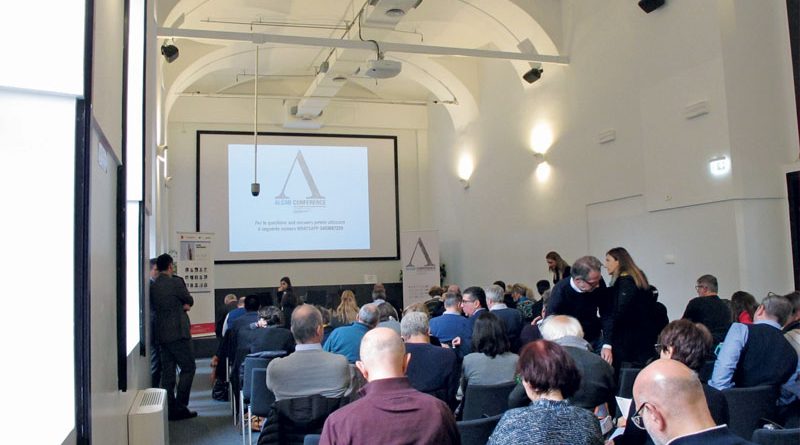Hi Tech Architecture Turns to Aluminium Castings
Lightness, high mechanical performances, extreme freedom of form and next-generation smelting technologies bring aluminium castings to the most daring architectures
by Roberto Guccione
A reflection on the opportunities provided by the use of aluminium castings in the construction of increasingly efficient and versatile buildings, easy to recycle at the end of their life cycle: this was the approach of the day-long event, “ALCAB Conference – Large aluminium castings in architecture and beyond”, held in Milan on November 13th. The use of aluminium castings as decorative or structural elements of buildings is definitely not a novelty, but it is certainly a much less frequent and less widely known application with respect to extrusions or rolled products. However, considering the success in terms of turnout achieved by Milan’s event, reserved for architects, engineers and plant designers, the interest level among trade operators seems to be high. Organized by Action Group, specialized in formative events targeted to architects and the design segment, along with Fonderia Castalia (Self Group) based in Rivignano Teor (near Udine) and well-coordinated by Ezio Micelli (IUAV Venice), the Conference explained, thanks to the contributions of speakers from the academic world, industry and design, how aluminium castings can provides architects with extreme freedom of form, lightness and high mechanical performances to create innovative architectural elements and make the design project faster and more efficient, particularly by means of the increasingly widespread adoption of BIM(Building Information Modeling) software. Provided the architects know the properties of the light metal, which were well illustrated by the speeches by Maurizio Vedani (from Milan’s Polytechnic) and Lorenzo Fedrizzi (from the University of Udine), and the peculiarities of available technologies, to pinpoint the one most appropriate one for the final application of the required building element. Alloys, foundry techniques and heat treatments play a central role, but knowledge consolidated during years of application in other industrial segments, particularly automotive and aerospace, allow an extreme control of the process and of the final performances of the castings. Virtualisation software and FEM analysis using finite elements, as Paolo Caccavale (ESI Group) and Federico Casarotto (ECOTRE Valente) explained, can foresee the real performances of the finished casting considering the changes undergone by the material during the entire fabrication process, thereby allowing architects to test and correct the design idea, the sizes and the shapes using a “virtual casting” before going on with its production in the foundry. Actually, co-production and Open Innovation approach are the concepts which since 2007 have driven the evolution of architectural castings created by Fonderia Castalia, specialized in large “ready to assemble” castings (up to 3,000 kg) destined to the projects of the most famous starchitects. Elements which take up unusual shapes, with a high aesthetic value, thanks to the dialogue between the technical knowledge of foundries and the creativity of designers.

